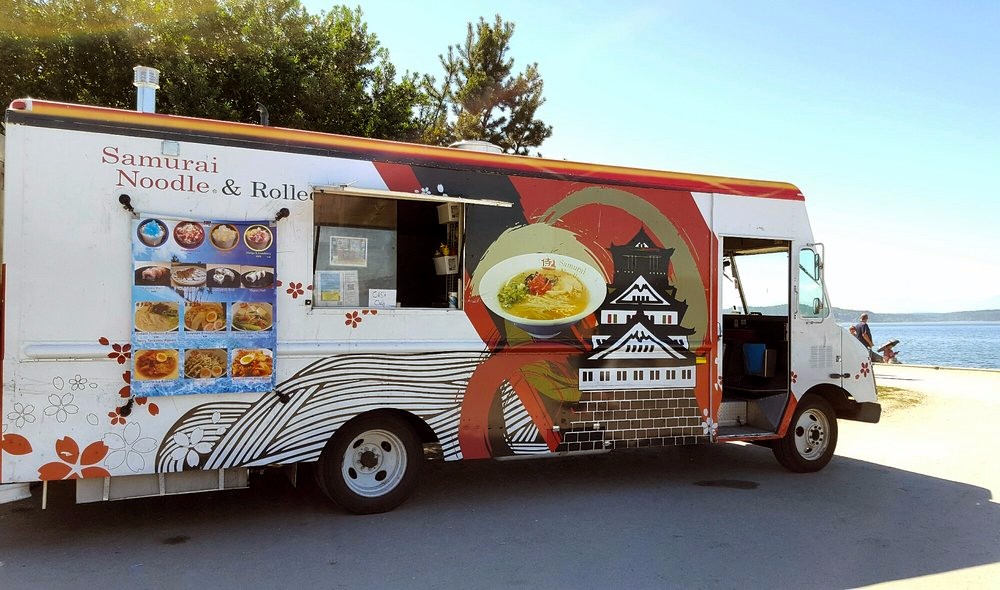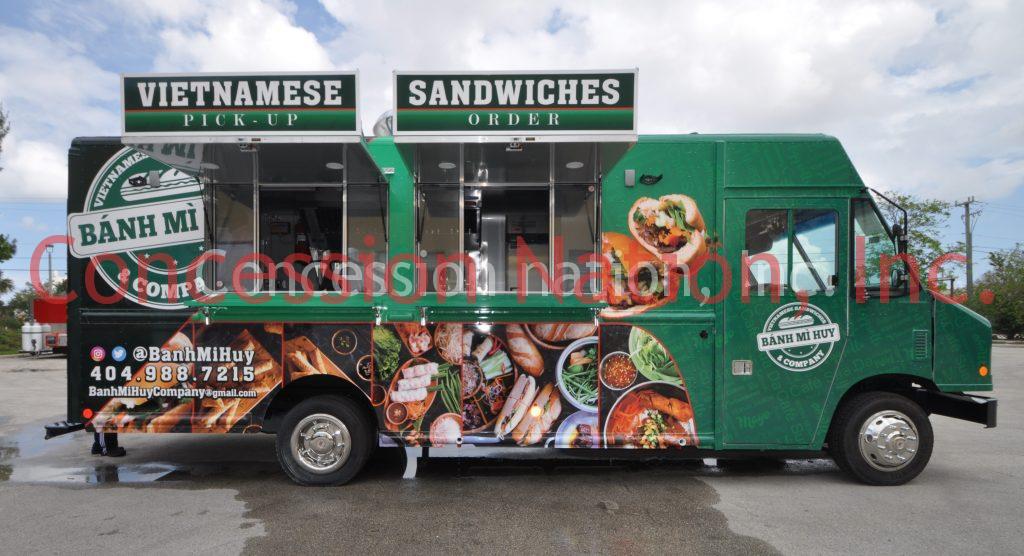Asian food trucks have emerged as a vibrant and delicious trend in the culinary world, captivating food lovers everywhere. These mobile kitchens not only offer an array of authentic Asian flavors but also represent a fusion of cultures, creativity, and convenience. With the growing popularity of street food, Asian food trucks provide a unique opportunity for chefs and entrepreneurs to showcase their culinary skills while bringing diverse flavors to the streets.
In this article, we will explore the fascinating world of Asian food trucks, diving into their history, the variety of cuisines they offer, their impact on local communities, and tips for starting your own food truck business. Whether you are a food enthusiast, an aspiring chef, or simply curious about this culinary phenomenon, this guide will provide valuable insights into the world of Asian food trucks.
Join us on this delicious journey as we uncover the secrets behind the success of Asian food trucks and how they have transformed the food scene across cities. Let's dive in!
Table of Contents
1. The History of Asian Food Trucks
The concept of food trucks is not new; however, the rise of Asian food trucks has its roots in the growing popularity of Asian cuisines in the West. Originally, food trucks served simple fare, often catering to specific local communities. Over time, as the interest in diverse culinary experiences increased, Asian food trucks began to flourish.
In the early 2000s, cities like Los Angeles and New York saw the emergence of food trucks specializing in Asian cuisine, offering dishes from various regions such as Japan, Thailand, Korea, and Vietnam. These food trucks quickly gained a loyal following due to their affordability, accessibility, and unique flavors.
Today, Asian food trucks continue to thrive, with many chefs and entrepreneurs embracing the food truck model as a way to reach a broader audience while showcasing their culinary heritage.
2. Diverse Cuisines Offered by Asian Food Trucks
Asian food trucks are known for their diverse offerings, reflecting the rich culinary traditions of various Asian countries. Here are some popular cuisines you can find:
- Chinese: Dim sum, dumplings, and stir-fried noodles are some of the highlights.
- Japanese: Sushi rolls, ramen, and takoyaki are crowd favorites.
- Korean: Korean BBQ, bibimbap, and tteokbokki are often featured.
- Thai: Pad Thai, green curry, and mango sticky rice are popular choices.
- Vietnamese: Pho, banh mi, and spring rolls are commonly served.
Each food truck brings its unique twist to these traditional dishes, often incorporating local ingredients or innovative cooking techniques. This fusion of flavors not only attracts a diverse clientele but also keeps the dining experience fresh and exciting.
3. Impact on Local Communities
Asian food trucks have made a significant impact on local communities by providing more than just food. They serve as cultural ambassadors, introducing the rich culinary traditions of Asia to a broader audience. Here are a few ways they contribute to the community:
- Promoting Diversity: Food trucks encourage cultural exchange and appreciation, fostering a sense of community.
- Supporting Local Economies: Many Asian food trucks source ingredients from local farmers and suppliers, helping to boost the local economy.
- Creating Job Opportunities: Food trucks create jobs not only for the owners but also for staff, contributing to local employment.
Moreover, many food trucks participate in community events, festivals, and charity drives, further solidifying their role as integral members of the community.
4. Tips for Starting Your Own Asian Food Truck
If you're considering starting your own Asian food truck, here are some essential tips to get you started:
- Research Your Market: Understand your target audience and the demand for specific Asian cuisines in your area.
- Create a Unique Menu: Offer a blend of traditional and innovative dishes to attract a diverse clientele.
- Comply with Regulations: Familiarize yourself with local health and safety regulations and obtain necessary permits.
- Invest in Quality Equipment: Ensure your food truck is equipped with the necessary tools for food preparation and storage.
- Utilize Social Media: Promote your food truck through social media platforms to build a following and keep customers updated on locations and specials.
Starting a food truck can be a rewarding venture, but it requires careful planning and execution. By following these tips, aspiring food truck owners can set themselves up for success.
5. Challenges Faced by Asian Food Truck Owners
While the food truck business can be rewarding, it also comes with its own set of challenges:
- Competition: The food truck industry is highly competitive, making it essential to differentiate your offerings.
- Weather Dependence: Outdoor operations are susceptible to weather conditions, which can affect sales.
- Regulatory Hurdles: Navigating permits and health regulations can be time-consuming and complex.
- Operational Costs: Managing food costs, fuel, and maintenance can be challenging for new business owners.
Understanding these challenges and developing strategies to overcome them is crucial for long-term success in the food truck industry.
6. Success Stories: Notable Asian Food Trucks
Several Asian food trucks have gained recognition for their exceptional offerings and business acumen. Here are a few notable examples:
- Kogi BBQ (Los Angeles): This Korean BBQ taco truck has become a pioneer in the food truck scene, famous for its fusion of Korean and Mexican flavors.
- Nom Nom Truck (Los Angeles): Specializing in Vietnamese banh mi sandwiches, Nom Nom Truck has garnered a loyal following.
- Banh Mi Boys (Toronto): Known for their creative take on Vietnamese sandwiches, this food truck has expanded into a brick-and-mortar location due to its popularity.
These success stories showcase the potential of Asian food trucks to thrive and innovate within the culinary landscape.
7. Trends in the Asian Food Truck Scene
The Asian food truck scene is continually evolving, with several trends shaping its future:
- Health-Conscious Choices: Many food trucks are incorporating healthier options, catering to the growing demand for nutritious meals.
- Plant-Based Offerings: The rise of plant-based diets has led to an increase in vegetarian and vegan Asian dishes.
- Global Fusion: Asian food trucks are experimenting with fusion cuisine, blending traditional flavors with global influences.
Staying abreast of these trends can help food truck owners adapt and stay competitive in the market.
8. The Future of Asian Food Trucks
The future of Asian food trucks looks promising, with an increasing interest in diverse culinary experiences. As more people seek out authentic flavors and innovative dishes, food trucks will continue to play a vital role in the food landscape.
With the potential for expansion into new cities and regions, as well as the opportunity for collaboration with local businesses and events, the Asian food truck industry will likely see continued growth. As entrepreneurs embrace creativity and adaptability, the possibilities are endless.
Conclusion
Asian food trucks have become a significant part of the culinary scene, offering delicious and diverse flavors while positively impacting local communities. From their rich history to the variety of cuisines they offer, food trucks have transformed the way we experience Asian food.
If you're inspired to explore the world of Asian food trucks, consider trying one in your area or even starting your own culinary adventure on wheels. Share your thoughts in the comments below, and
Article Recommendations



ncG1vNJzZmilqZu8rbXAZ5qopV%2BcrrOwxKdwaJmjnq6vecWopp1lpKfCpLeNoaumpA%3D%3D